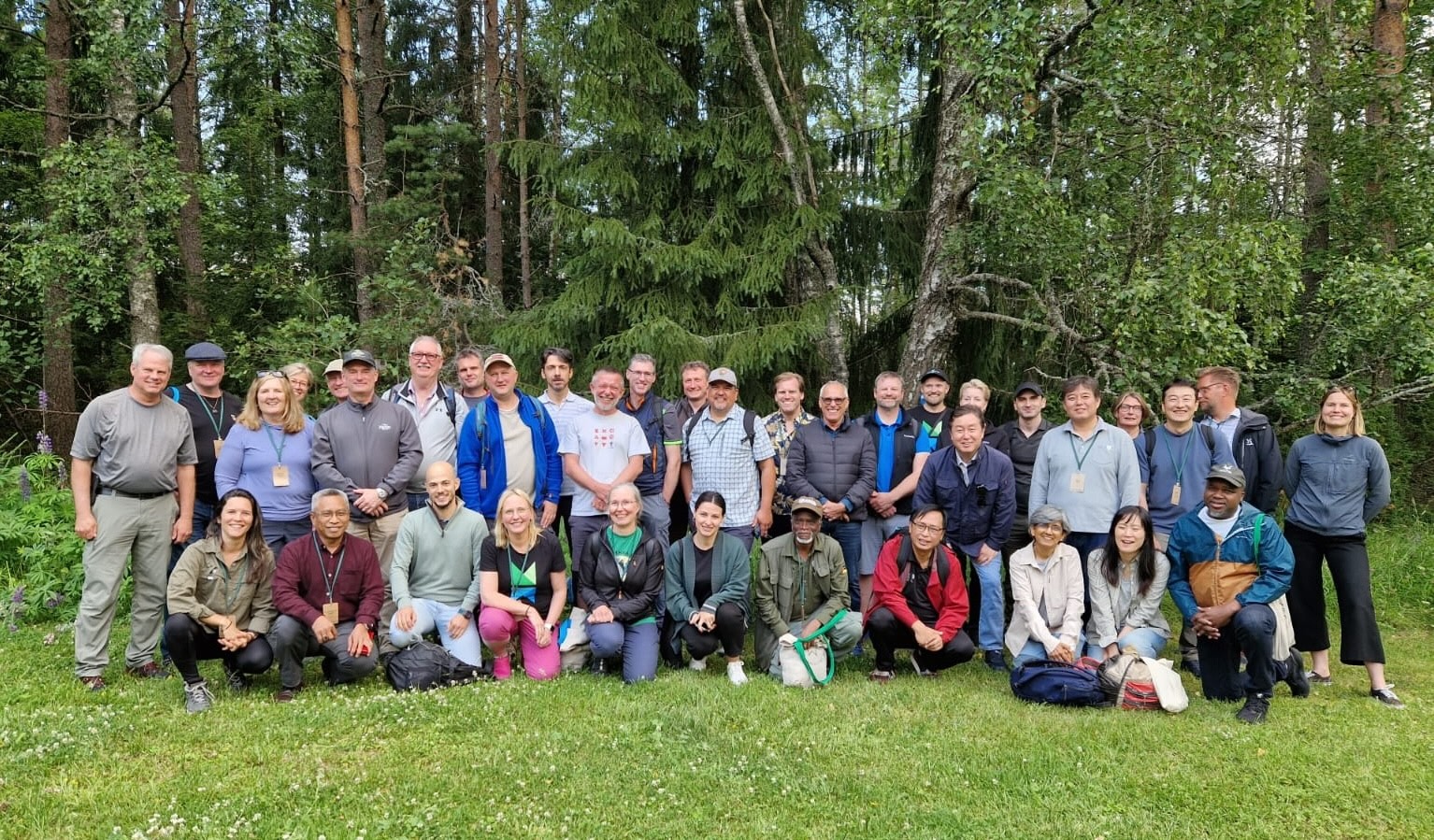Over one third of hoverflies threatened with extinction in Europe - IUCN Red List
Brussels, Belgium, 11 October 2022 (IUCN) – Thirty-seven per cent of all hoverfly species in Europe are threatened with extinction, according to the first continent-wide assessment of this essential pollinator group on the IUCN Red List of Threatened SpeciesTM, which was requested and funded by the European Commission. Intensive agriculture and harmful pesticides, unsustainable commercial forestry, urban development and climate change have been identified as the main threats to hoverflies.
“This first-ever European Red List assessment of hoverflies highlights their immense diversity and their pivotal role in our food and agriculture systems. However, it is these same systems that are a leading cause of hoverfly decline,” said Dr Bruno Oberle, IUCN Director General. “To turn the fate of hoverflies around, we urgently need to transform all sectors of our economies, and especially agriculture, to become nature-positive and sustainable. The IUCN Leaders Forum this week is a great opportunity to find common ground on how to achieve this goal ahead of the crucial UN Biodiversity Conference in December.”
This IUCN European Red List assessment found that 314 out of 890 species in Europe are Vulnerable, Endangered or Critically Endangered. Hoverflies (Syrphidae) are critical for the planet’s food security because they are the second most significant pollinator group globally after bees, often showing higher rates of visiting flowers than bees. They also naturally control populations of aphids, small sap-sucking insects that damage many commercial crops, such as the green peach aphid (Myzus persicae) on peach crops.
Intensive agriculture is the most common threat to hoverflies across Europe, affecting more than half (475) of all 890 species. Unsustainable farming practices that impact hoverflies include land conversion of suitable habitat, habitat degradation by livestock overgrazing and the fragmentation of natural and semi-natural habitats. In addition, the use of pesticides affects at least 55 species across the region. The loss or degradation of habitat (in particular the loss of ancient trees from a variety of drivers including commercial forestry), urban development and climate change are other important threats.
Targeted area-based conservation measures are needed to protect key hoverfly habitats, especially wetlands, ancient woodlands that are home to old trees, and also semi-natural habitats outside of formally protected areas. The assessment identifies practices such as field margins planted with wildflowers or hedgerow restoration, which form part of well-supported sustainable farming methods across Europe, as beneficial to hoverflies.
“The main way to help stop the decline in hoverfly populations is by protecting their habitats and connecting habitats across the landscape. Most urgently, it is critical to protect ancient trees which contain trunk cavities, tree-holes, sap-runs, fallen branches and tree stumps – the microhabitats where the larvae of a wide range of species feed, including many that are threatened,” said Dr Francis Gilbert, Co-Chair of the IUCN SSC’s Hoverfly Specialist Group.
Over a quarter (244) of the assessed species were found to be impacted by habitats degrading, shifting and changing as a result of climate change and the related increase in fire frequency. As forest fires often clear dead wood and old trees, hoverflies are forced to move into new areas to cope with changing landscapes. Hoverfly species in the Alps, Pyrenees and the Dinaric Alps, where species richness is the highest, are particularly affected by this threat. Reducing greenhouse gas emissions, alongside restoring ecosystems, will be essential in addressing this threat.
The assessment, which was requested and funded by the European Commission, completes an important milestone in the implementation of the EU Pollinators Initiative, contributing to the European Green Deal objectives. While it has produced actionable knowledge to support the EU’s efforts to reverse the decline of pollinators, more research is needed to fill key data gaps.
###
Download photos.
For more information or interviews please contact:
Harriet Brooker, IUCN Media Relations, +44 7960241862, press@iucn.org
Matthias Fiechter, IUCN Media Relations, +41 795360117, press@iucn.org



